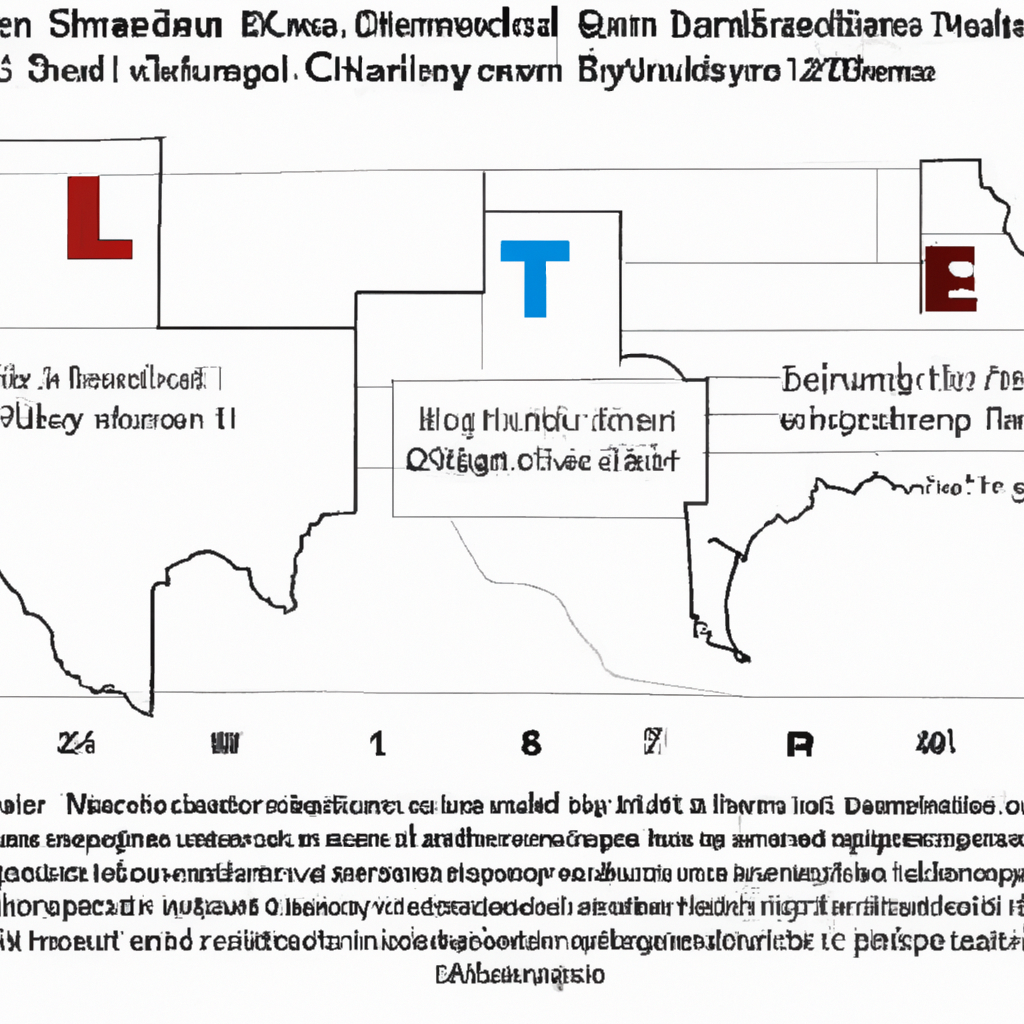In this article, we will explore and highlight the four cities in Texas that have received the lowest rankings in terms of education. By examining the data and statistics available, we will shed light on the challenges these cities face and the possible implications this has on their residents. Understanding the educational landscape of these cities is vital for identifying areas that require attention and resources to ensure a brighter future for the communities and individuals involved. Let us now delve into the details and unveil the four least educated cities in Texas.
Overview
In this article, we will be discussing the four least educated cities in Texas: McAllen, Edinburg, Brownsville, and Pharr. These cities face various challenges when it comes to education, from low educational rankings to socioeconomic factors. However, it is crucial to highlight the initiatives that these cities have undertaken to improve their education systems. By analyzing the demographics, educational rankings, reasons for low education rates, and initiatives to improve education, we can gain a comprehensive understanding of the education landscape in these cities and the efforts being made to address the issue.
1. McAllen
1.1 Demographics
McAllen, a city located in southern Texas, is known for its vibrant culture and diverse population. According to recent data, the city has a population of approximately 143,000 people. The demographics of McAllen primarily consist of Hispanics, accounting for over 85% of the population. The median age in McAllen is 32.8 years, indicating a relatively young population.
1.2 Educational Rankings
Despite its rich cultural heritage, McAllen struggles with low educational rankings. The city frequently ranks below the state average in key educational indicators, such as high school graduation rates and college enrollment rates. These rankings highlight the need for targeted efforts to improve educational outcomes in McAllen.
1.3 Reasons for Low Education Rates
Several factors contribute to the low education rates in McAllen. Socioeconomic challenges, including poverty and limited access to resources, play a significant role. Additionally, language barriers, with a large portion of the population being Spanish speakers, can pose hurdles to academic success. Lack of parental involvement and support further compound these challenges, impacting the educational achievements of students in McAllen.
1.4 Initiatives to Improve Education
Recognizing the need for improvement, McAllen has implemented various initiatives to enhance its education system. The city has focused on improving access to quality early childhood education programs, believing that a strong foundation can greatly impact students’ long-term success. Collaborative efforts between schools, community organizations, and the local government have also been established to provide additional support and resources to students. These initiatives aim to bridge the educational gaps in McAllen and empower students to excel academically.

2. Edinburg
2.1 Demographics
Edinburg, another city located in southern Texas, shares some similarities with McAllen, including a large Hispanic population. With a population of approximately 97,000 people, Edinburg is home to a diverse community. The median age in the city is 28.4 years, reflecting a younger population compared to the national average.
2.2 Educational Rankings
Unfortunately, Edinburg also struggles with low educational rankings. The city consistently falls behind the state average in educational indicators, such as standardized test scores and college readiness rates. These rankings highlight the need for targeted interventions to improve educational outcomes in Edinburg.
2.3 Reasons for Low Education Rates
Several factors contribute to the low education rates in Edinburg. Similar to McAllen, socioeconomic challenges, including poverty and limited access to resources, pose significant barriers to academic success. Additionally, a high percentage of English language learners present unique challenges in the classroom. Limited parental involvement and support further contribute to the educational challenges faced by students in Edinburg.
2.4 Initiatives to Improve Education
Edinburg has taken proactive measures to address its education challenges. The city has focused on expanding early childhood education programs, emphasizing the importance of early intervention for academic success. Collaboration between schools, parents, and community organizations has been fostered to provide additional educational support. Additionally, efforts have been made to increase college and career readiness programs, enabling students to better prepare for higher education and professional opportunities.
3. Brownsville
3.1 Demographics
Brownsville, located on the southern tip of Texas, is a city with a rich history and vibrant community. With a population of approximately 183,000 people, Brownsville is the most populous city on our list. The city’s demographics are predominantly Hispanic, accounting for over 90% of the population. The median age in Brownsville is 30.4 years, indicating a relatively young population.
3.2 Educational Rankings
Unfortunately, Brownsville faces challenges in educational rankings as well. The city consistently ranks below the state average on key educational indicators, such as standardized test scores and high school graduation rates. These rankings emphasize the need for targeted interventions to improve educational outcomes in Brownsville.
3.3 Reasons for Low Education Rates
Multiple factors contribute to the low education rates in Brownsville. Socioeconomic factors, including poverty and limited access to resources, pose significant barriers to academic success. Limited English proficiency among a substantial portion of the population adds another layer of difficulty for students in Brownsville. Insufficient parental involvement and support further impact educational achievements in the city.
3.4 Initiatives to Improve Education
Confronting these challenges head-on, Brownsville has implemented various initiatives to enhance its education system. The city has focused on improving access to quality early childhood education and pre-kindergarten programs, recognizing the long-term impact of early intervention. Collaborative efforts between educational institutions, community organizations, and local businesses have been established to provide additional resources and support to students. By empowering students and equipping them with the necessary tools, Brownsville aims to improve educational outcomes for its residents.

4. Pharr
4.1 Demographics
Pharr, situated in southern Texas, completes our list of the four least educated cities in the state. With a population of approximately 80,000 people, Pharr is relatively smaller compared to the other cities discussed. The demographics of Pharr consist predominantly of Hispanics, representing a significant majority of the population. The median age in Pharr is 26.6 years, indicating a youthful population.
4.2 Educational Rankings
Similar to the other cities, Pharr faces challenges in educational rankings. The city consistently falls below the state average in educational indicators, such as standardized test scores and college enrollment rates. These rankings underline the critical need for targeted interventions to improve educational outcomes in Pharr.
4.3 Reasons for Low Education Rates
Pharr shares common reasons for its low education rates with the other cities on this list. Socioeconomic factors, including poverty and limited access to resources, can hinder academic success. Language barriers, with a substantial portion of the population being Spanish speakers, add another layer of complexity. Additionally, inadequate parental involvement and support impact the educational achievements of students in Pharr.
4.4 Initiatives to Improve Education
Pharr has recognized the importance of addressing its educational challenges and has implemented initiatives to improve education in the city. Early childhood education programs have been expanded to provide a strong educational foundation for students. Collaboration between schools, community organizations, and local leaders has been emphasized to provide additional support structures for students. Efforts to promote college and career readiness have also been significant, enabling Pharr students to pursue higher education and professional opportunities.
Conclusion
In conclusion, McAllen, Edinburg, Brownsville, and Pharr face significant challenges in their education systems. These cities consistently rank below the state average, highlighting the need for targeted interventions. Socioeconomic factors, language barriers, and limited parental involvement contribute to the low education rates in these cities. However, it is essential to acknowledge the initiatives being undertaken to improve education in these communities. With a focus on early childhood education, collaboration between various stakeholders, and an emphasis on college and career readiness, these cities are actively working towards enhancing educational outcomes for their residents. By continuing these efforts, McAllen, Edinburg, Brownsville, and Pharr can pave the way for a brighter and more educationally prosperous future for their communities.

